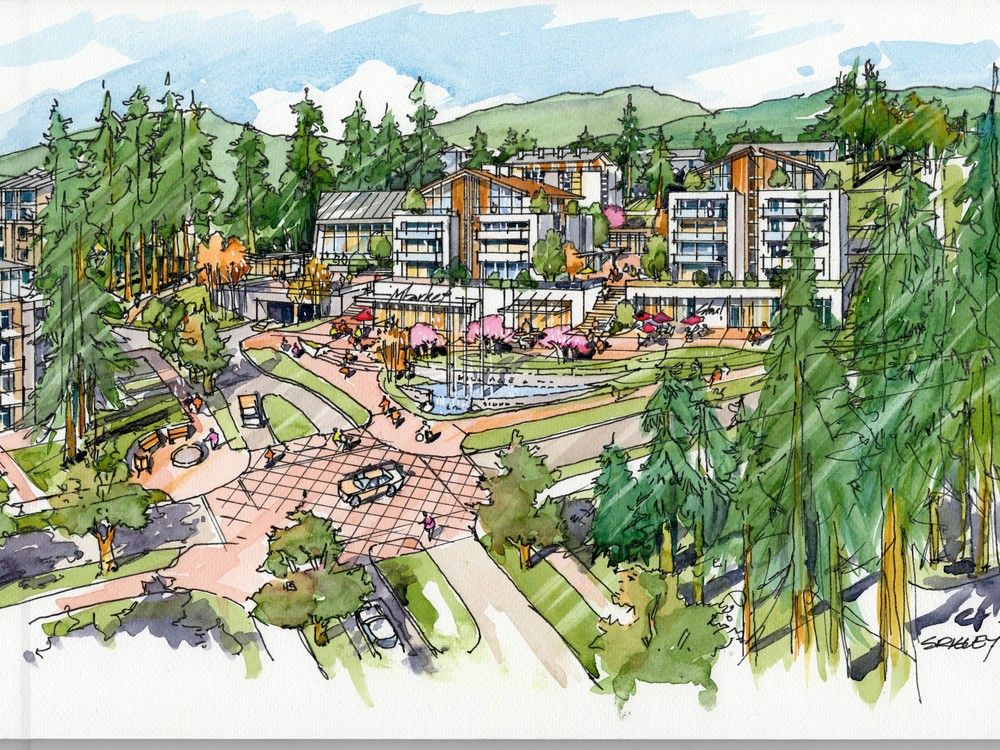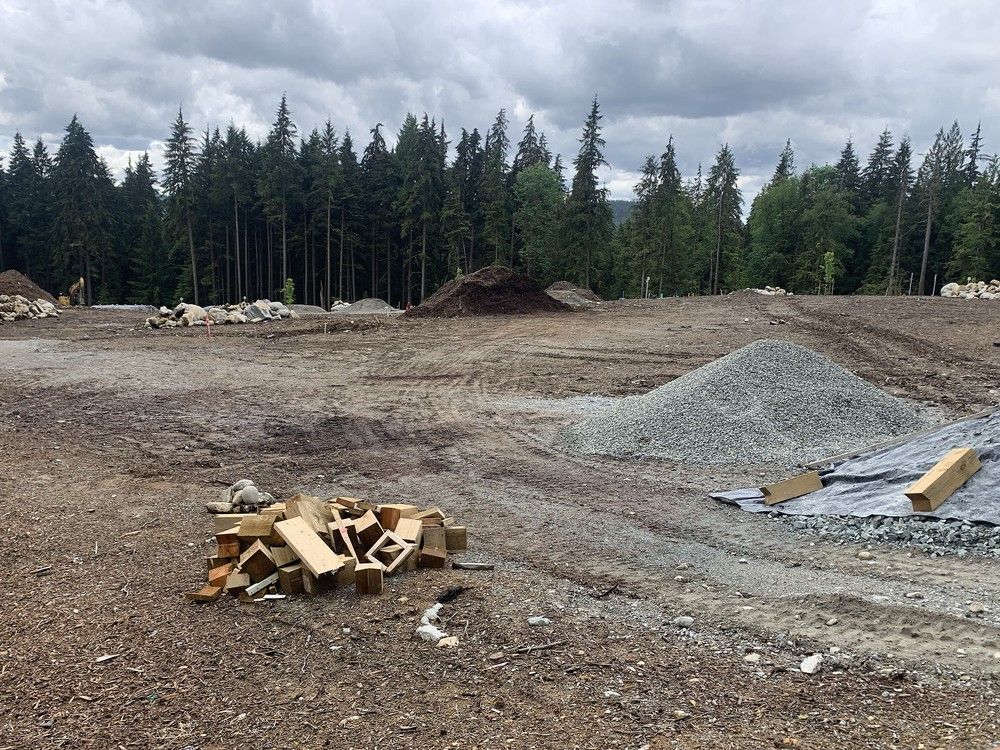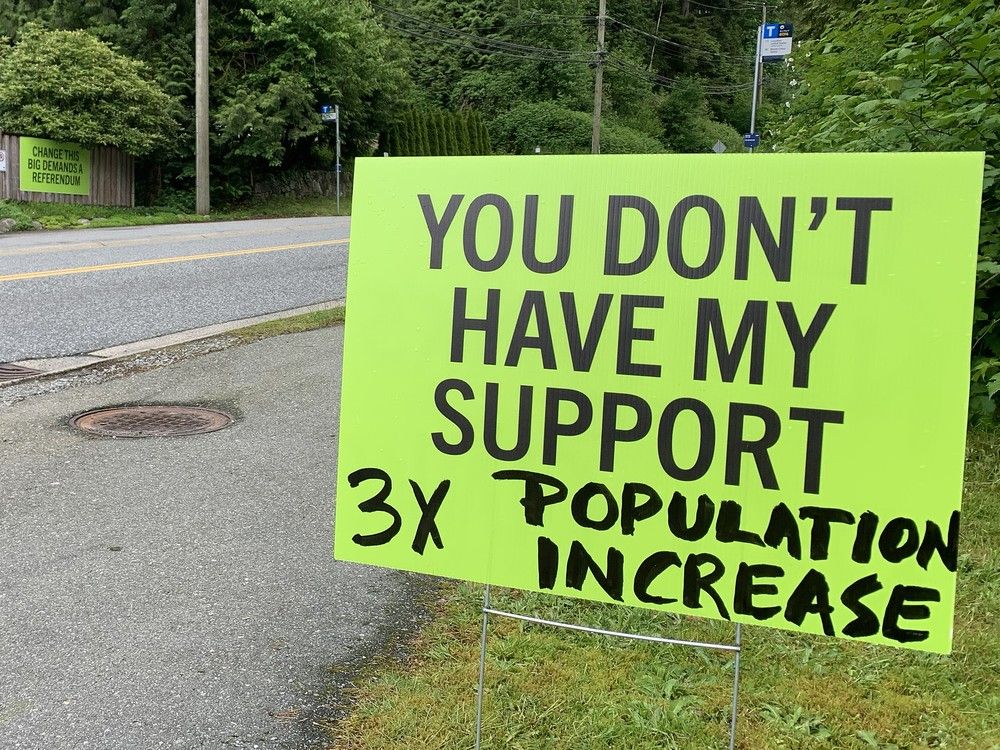
The developer behind a mixed-use project that would have added 1,750 homes to the small village of Anmore pulled the plug just before council was set to hold a public hearing.
On Monday, a hearing was set to begin at 6 p.m. When organizers opened the meeting on Zoom, a note said council was convening before opening it to the public. Minutes later, the feed shut down.
Anmore Mayor John McEwen confirmed later Monday night that the developer, Icona Properties, had withdrawn the application an hour before the hearing.
“Needless to say, this came as a surprise,” said McEwen, who thanked staff, councillors, contractors and the public for their contributions to and input on the proposal. He said the project is essentially dead unless Icona comes forward in future with a new plan.
The development would have radically altered the official community plan for the village of about 2,500 residents and more than doubled the population as it was phased in over more than two decades. It called for just 20 single-family homes in a village where that’s been the norm, along with 120 duplexes, 960 townhomes and 650 residential and mixed-use apartments.
The village received over five dozen letters ahead of the public hearing, most opposing the development for reasons ranging from traffic and infrastructure pressures to ruining the village’s rural character.
Some pointed out that the neighbouring village of Belcarra and City of Port Moody wrote formal letters of concern about the plan, calling out its scale and pressure on regional infrastructure.
“The proposed development could dramatically change the region’s traffic dynamics and emergency response readiness,” wrote Kristina Bell of Belcarra, in the first submission received on June 11.
“With only a few constrained access routes — including Sunnyside Road, Ioco Road, and Bedwell Bay Road — any increase in population and vehicle use must be thoroughly planned. The implications for evacuation safety, particularly in the event of wildfire, cannot be overlooked. This is not just a local planning issue; it is a regional one.”

Chantelle Bennett, an Anmore teacher, warned the influx of residents into the small community would force students into portables. “We do not need thousands of new townhomes and apartments that lack proper access to transit, will add strain to our roads, and bring environmental and logistical impacts that we’re not prepared for,” said Bennett.
Some pointed out the plan would have fundamentally changed the character of the village. “Anmore is rural and that is why we love it here,” wrote Michael Robson. “There is no other place in the Lower Mainland that offers Anmore’s unique quality of life living close to nature yet easily accessible to city amenities.”
Instead, Robson argues, the council plans to bring “massive clearcuts, noise, traffic chaos, traffic jams, traffic lights, three times longer commutes just to get to Port Moody, pollution, a forested wasteland, decimation of the local wildlife, and a sadness to watch it all happen.”
Anca and Dan Catona said the developer should be forced to wait until the Anmore official community plan has been reviewed. “The current zoning would allow for around 300 housing units, which meets Anmore’s growth requirements, can be supported by existing infrastructure including roads, and does not require a change to Anmore’s rural designation.”
“The character of Anmore has always been defined by responsible, low-impact development rooted in nature, privacy, and safety,” wrote Torval Mork. “This proposal disregards the very rationale many of us used to purchase, build, and make lives here. It’s not development we oppose — it’s unchecked, unbalanced expansion that will strain already limited infrastructure and compromise public safety, environmental integrity, and community cohesion.”
James and Stacey Nadolny questioned the rush to upend Anmore’s official plan for the sake of the developer. “When such an overwhelming majority of residents are opposed, we must ask whose interests are truly being served here? What pressures or incentives are driving this sudden shift in vision for Anmore’s future? These are not rhetorical questions — they require direct and transparent answers.”
A few submissions supported the development on the grounds it would provide housing other than single-family homes for those in the area who want to stay put but might need to downsize or find more affordable options.
“When young families are pushed out or cannot live in the area they grew up in, the age demographic shifts,” said John Snell of Belcarra. “When retirees are displaced or forced to remain in homes that no longer suit their needs, housing stock remains inefficiently allocated, and elder isolation increases.”
But even though Snell supported Anmore South, he warned that “the concerns of existing residents in regard to transportation and roadways must be addressed ahead of any other consideration.”

Some Anmore residents accused neighbours of “NIMBYism” and criticized road signs that targeted village councillors for “harassment.”
One anonymous supporter, on behalf of a family of six living in the village, said: “I am disgusted by the NIMBYism and so-called ‘friendly’ neighbourhood associations that, driven by self-interest, seed doubt and division in our community, stifling the silent majority who yearn for sustainable growth and a vibrant, complete Anmore.
“The Anmore South neighbourhood plan is a once-in-a-generation opportunity to build a resilient community with diverse housing for all life stages, over 42 per cent of land dedicated to parks and conservation, and local shops, services, and a community centre.”
Chris and Rob Trowbridge said they would have jumped at the chance to move into the planned development after living and raising their children in the village for 15 years. “Unfortunately, Anmore had no options for us to downsize. We were left to look to neighbouring communities.”
“Young Anmore resident” Brandon Birch said the development “offers real opportunities for people like me to build a future here. This bylaw matters to me because it provides housing options that people my age can afford, ensuring I can stay in the community I love. It also offers a balanced vision for growth, preserving Anmore’s natural beauty and rural charm while enhancing livability.”